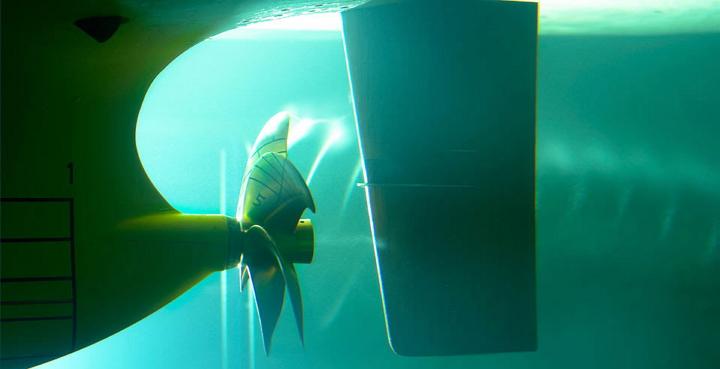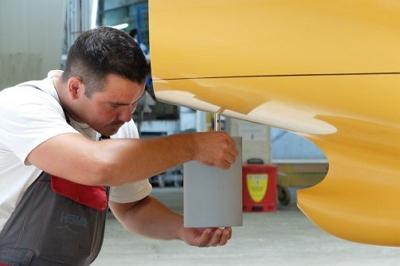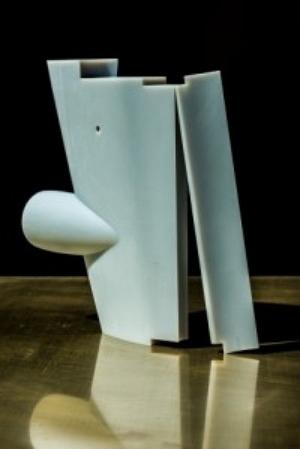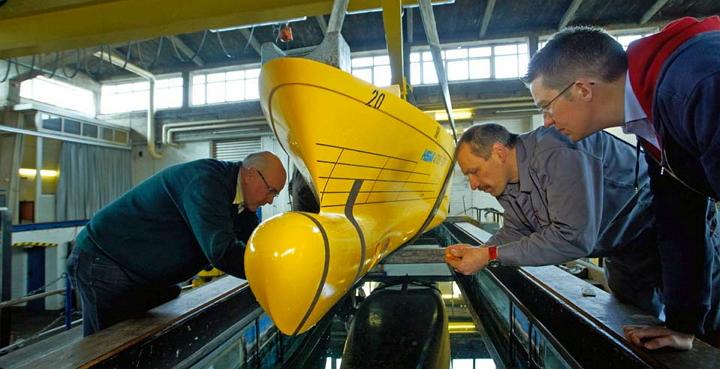 Hamburgische Schiffbau Versuchsanstalt – the Hamburg Ship Model Basin – is a private, self-supporting, nonprofit organization that provides research and consultancy services to the maritime industry around the world.
Hamburgische Schiffbau Versuchsanstalt – the Hamburg Ship Model Basin – is a private, self-supporting, nonprofit organization that provides research and consultancy services to the maritime industry around the world.
 The sophisticated experimental research facilities at HSVA have been at the leading edge of maritime model basin operations since it was founded in 1913. With the pioneering work of scientists and engineers, HSVA has developed a deep understanding of ship and offshore hydrodynamics, propeller design and arctic technology.
The sophisticated experimental research facilities at HSVA have been at the leading edge of maritime model basin operations since it was founded in 1913. With the pioneering work of scientists and engineers, HSVA has developed a deep understanding of ship and offshore hydrodynamics, propeller design and arctic technology.
The model basin offers a range of experimental activities from resistance and propulsion tests to seakeeping, maneuvering and cavitation experiments, as well as other investigative process for ships and “anything that floats.”
The HSVA large hydrodynamics and cavitation tunnel (HYKAT), 300 x 18 x 6 m in size, features multi-directional wave making capabilities and a unique ice tank.
 HSVA recently reduced lead times for their prototype ship model components by 70% – and production costs by 30% – by bringing their 3D printing in-house.
HSVA recently reduced lead times for their prototype ship model components by 70% – and production costs by 30% – by bringing their 3D printing in-house.
They say that since they installed a Stratasys Objet Eden350V 3D printer, the device has allowed their teams to rapidly produce strong, high-performance plastic prototype parts.
“A full-size ship is a complex geometric form with many complicated shapes that have to be re-produced true-to-scale. To traditionally manufacture a prototype ship rudder in wood or plastic is a very skilled and labor-intensive job and typically takes up to three weeks to produce,” says Michael Neumeier, the Mechanical Design Engineer at HSVA. “With our Stratasys in-house 3D Printer, we can produce parts within a day, which after cleaning, are ready for final assembly.”
HSVA now has enhanced capabilities, including improved flexibility to respond to last-minute customer requests.
The development of one of the most advanced marine propulsion systems – the azimuth propulsion drive or “Pods” – serves as an example of a component which is exceptionally difficult to produce and assemble. These Pods require a strut which must to be removed to swap out a gearbox, so HSVA developed a prototype design for the strut which was 3D printed to allow for fast access and repair.
“Being able to print the various parts on our Stratasys 3D Printer makes assembly much easier. This has seen us slash lead times by as much as 70%, which has resulted in significant cost reduction of around 30%,” Neumeier says.
The 3D printed components at HSVA are created with Stratasys’ VeroGray material, a rigid opaque formulation capable of withstanding rigorous testing procedures.
HSVA says their Objet Eden 350V 3D printer “produces strong and stiff plastic parts much faster and cheaper without compromising our high standards of quality, repeatability and accuracy.” The printer, which uses a wax-like support material, has made cleaning and preparation of parts easier.
For instance, a rudder flap they recently built took less than 12 hours of unsupervised overnight printing, and following one more hour of cleaning, the parts were ready for final assembly.
Do you know of any other stories where 3D prototyping and printing technology have impacted maritime development? Let us know in the Hamburg Ship Model Basin forum thread on 3DPB.com.
Subscribe to Our Email Newsletter
Stay up-to-date on all the latest news from the 3D printing industry and receive information and offers from third party vendors.
You May Also Like
3D Printing Unpeeled: Biofuel Waste to Filament & Sustainable Photopolymers
I can’t ever remember a day with so many potentially high impact news stories have come out. In one story, we all know that there are problems with the safety...
Finnair Hires AM Craft to 3D Print Plastic Parts for Aircraft Interiors
Riga-based AM Craft, a supplier specialized in 3D printing aviation components and certified under EASA Part 21G, announced a significant achievement today. The company will assist in upgrading Finnair’s A320...
3DPOD Episode 198: High Speed Sintering with Neil Hopkinson, VP of AM at Stratasys
Neil Hopkinson, a pioneering 3D printing researcher, played a pivotal role in developing a body of research that is widely utilized today. He also invented High Speed Sintering (HSS), also...
3D Printing Webinar and Event Roundup: May 12, 2024
Webinars and events are picking up in the AM industry this week! ASTM International continues its Professional Certificate Course and Stratasys continues its advanced in-person trainings, while 3D Systems is...

































